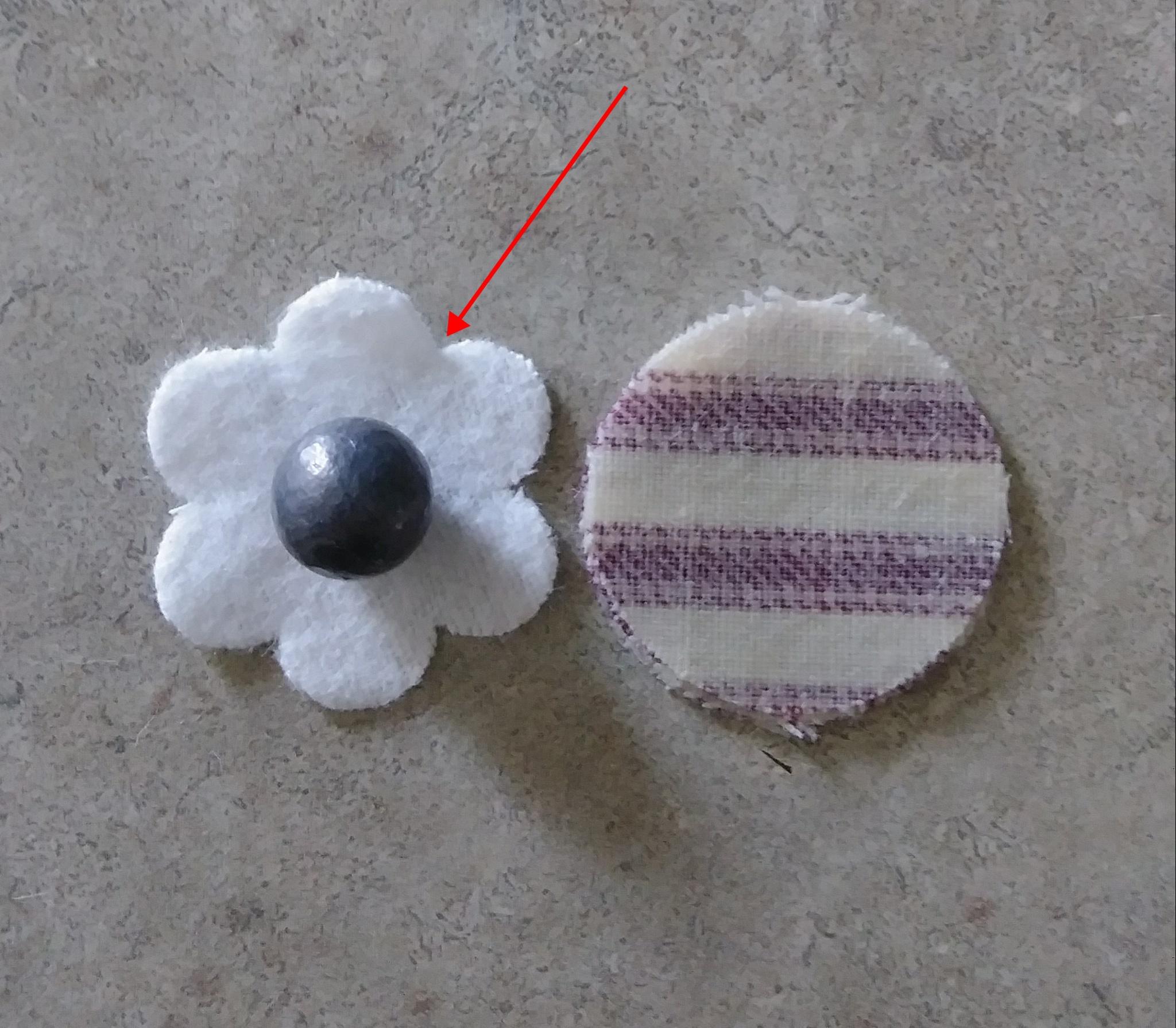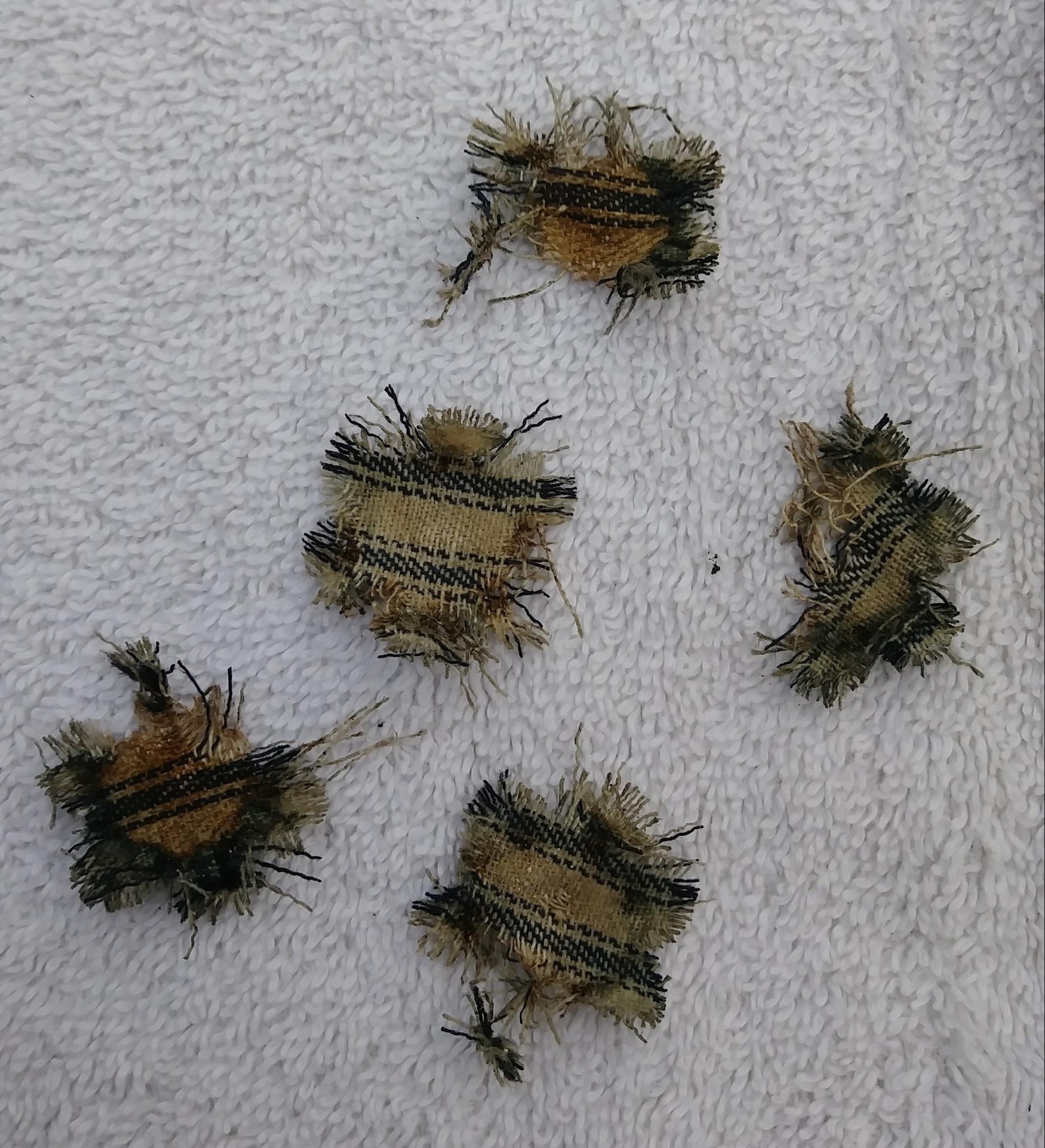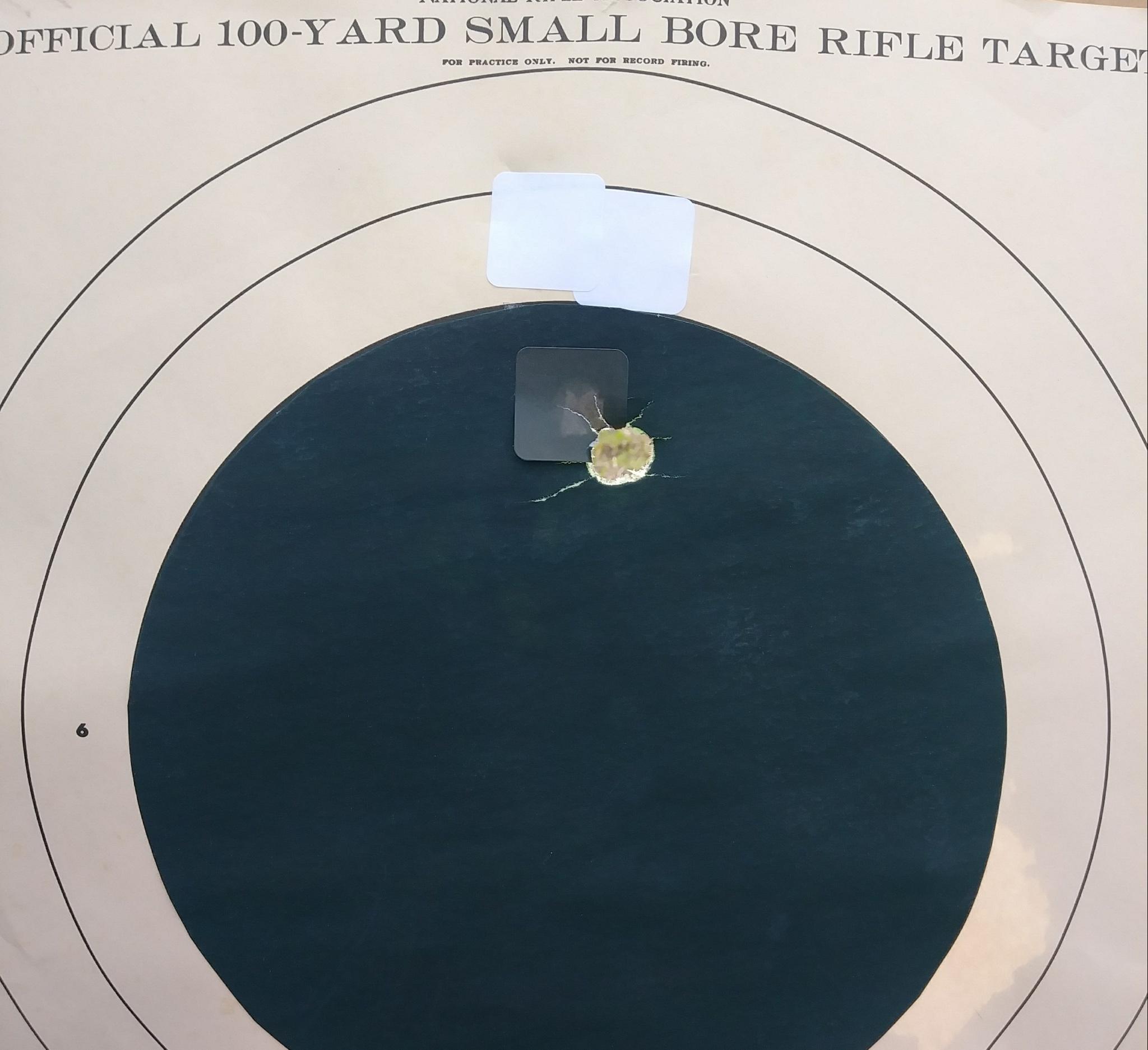A patch just needs to seal between the ball and the barrel so there is no gas leaking by, be tight enough that it imparts the barrel's twist to the ball, do both those things for the length of its ride down the barrel, and release from the ball once it leaves the barrel.
That's all it needs to do. Simple!
Except there are several variables.
I feel the best way to guarantee uniform patches over a long period of time is to select material from a fabric store and make them yourself. First you have to find the right material. This will require a micrometer or calipers, with a micrometer being easier for most to consistently measure with. Find the 100% cotton section and put the c-mic to work. You want to measure compressed thickness. Buy whatever minimum the store allows of a few different thicknesses (1/4 yard or 1/2 yard usually). The material will need washed to get the sizing starch out of it. Wash in hot water with no detergent. Put in a nylon or a delicates bag or it will unravel something fierce. Hang to dry. May want to iron it after it is dry.
Now you need to figure out what size you want them. The patch needs to wrap around the ball enough to seal the gasses behind it, but not be so big that the excess will grab and hold on to your short starter when you knock it into the barrel. Many feel the best way to get the perfect size patch is to cut at the muzzle. You can just always cut at the muzzle when you load, or use this method to figure out optimum patch size by doing this and then pulling it back out of the bore and measuring, or simply figure it out by cutting a few different sizes and then seeing what looks "about right" after short starting them.
Cut patches for each material you bought for testing. Square, square with the corners nipped off with scissors, or punched out round from some sort of tool.
One more thing I'd like to mention. I refuse to use a PRB combo that requires something extra as an over powder wad so the combo will shoot well. I feel a combo can be found that shoots very well without an extra over powder wad being needed. That's the darn patch's job!
Now you need to pick a lube. There are dang near more patch lubes than stars in the sky, but there are two main types: damp for ease of loading that will be shot right away, and grease style "hunting" lubes that can sit on the powder charge for a long time without drying out or leaching into the powder charge. In my experimenting I've found that I can almost always make a specific lube work for me, but I can increase/decrease group sizes by varying how much I apply to the patch. Somewhere between barely enough to just coat the entire patch out to the edges to "filling the weave" will likely be what your gun prefers.
I mainly use Mink oil from Track of the Wolf, home made olive oil / bees wax lube, or Frontier's anti-rust and patch lube. I apply them to the patches by hand and am perfectly happy with my group sizes for hunting. This next part is dependent on how OCD you are.
There is nothing more consistent for controlling the exact amount of lube and then applying that exact amount of lube to every single patch, that I'm aware of, than the Dutch Schultz method. This involves mixing Ballistol and water together, or castor oil and denatured alcohol, or some type of water soluble oil and water. Dutch says best accuracy is generally found somewhere between a 5:1 ratio and an 8:1 ratio. He has a book available that goes into way more detail of every facet of BP shooting.
An example of Dutch style lube application at a 7:1 ratio: Measure out 7 parts water to 1 part Ballistol. Mix them well. Dip patches into the solution and then squeeze out the excess lube. Some shoot them just like this as a damp style range lube, but Dutch set them out and let the water evaporate. All that will be left is an exact amount of Ballistol for a lube that can be used as a "hunting" style lube. Letting them dry generally makes the patches curl up, a bit annoying to me. "Dry" style patches like these almost always require swabbing between shots. Just a warning if you prefer to not have to swab.
Now you have several patch thicknesses lubed up and ready for testing. Don't forget that you need to find optimum powder charge as well. Find what makes the smallest groups. Then go back to the fabric store, find the winning material again, measure compressed thickness to be for sure it is the same thickness as what you tested, and then buy a couple yards of it. You will be set for patches for a LONG time.








 I use them, and will continue to do so. I have Bores that truly Look like Mirrors, yet Patches are DESTROYED, I use a Simple OP Wad and the Problem is Solved. They are worth it to me, My Targets Dont lie
I use them, and will continue to do so. I have Bores that truly Look like Mirrors, yet Patches are DESTROYED, I use a Simple OP Wad and the Problem is Solved. They are worth it to me, My Targets Dont lie
